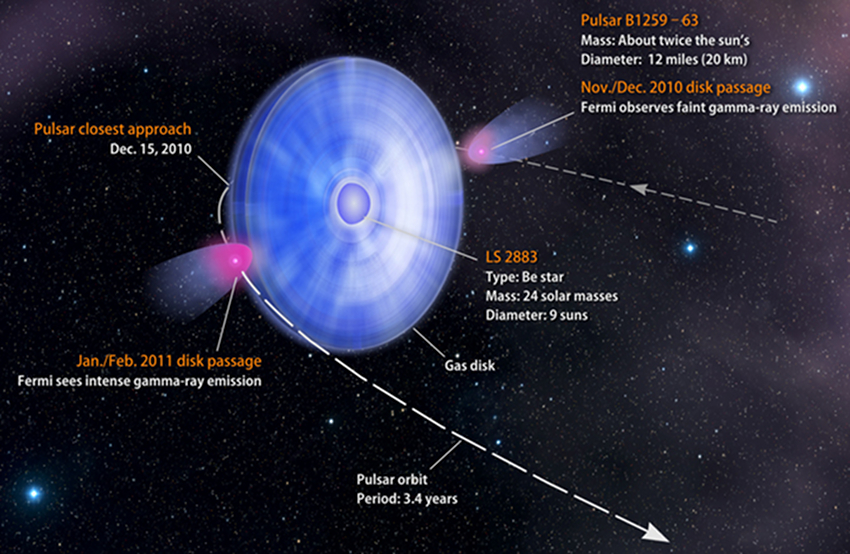
 Credit: NASA's Goddard Space Flight Center/Francis Reddy
Credit: NASA's Goddard Space Flight Center/Francis Reddy
Fireworks
The expected can sometimes be unanticipated. A strange stellar system called LS 2883 consists of a rapidly rotating neutron star pulsar called B1259-63 orbiting around a massive star. The massive star is surrounded by a disk of material which was flung off the equatorial region of the star. The orbit of the neutron star is a very eccentric ellipse, and every 3.4 years the neutron star passes close to the massive star. This means that the neutron star plows into the edge of the disk around the neutron star, and sometime afterwards emerges around the other side, hitting the opposite disk edge on the way out. The schematic of this is shown in the image above. Because this represents a unique opportunity to both probe the nature of the excretion disk and to see how a pulsar's strong magnetic field interacts with circumstellar matter, astronomers organized an international campaign to watch the passage of the pulsar through the disk cover almost the entire electromagnetic spectrum. Perhaps the biggest surprise was obtained by the Fermi Gamma-Ray Space Telescope. Not only did Fermi show that the disk passage resulted in strong, high energy gamma-ray emission, but for some strange reason, the second passage of the pulsar through the stellar disk was brighter, and much more erratic, than the first passage. Astronomers still aren't sure why. Stay tuned!
Published: July 4, 2011
<
HEA Dictionary ● Archive
● Search HEAPOW
● Other Languages
● HEAPOW on Facebook
● Download all Images
● Education ● HEAD
>

Each week the HEASARC
brings you new, exciting and beautiful images from X-ray and Gamma ray
astronomy. Check back each week and be sure to check out the HEAPOW archive!
Last modified Tuesday, 27-Feb-2024 10:10:09 EST


